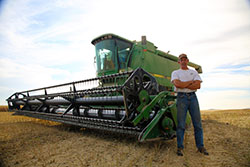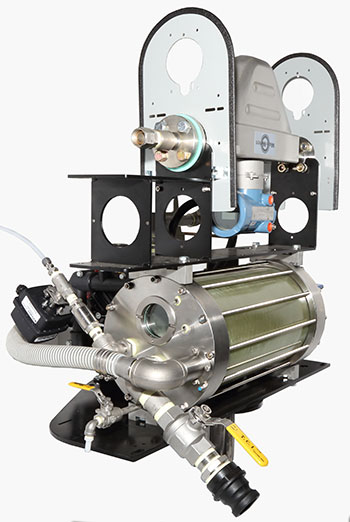|
Can Pioneer raise more Milo economically? Exactrix has an economic answer for producers...High 7.5 to 8.5 PH soil, Hugoton, 100 bushel per acre Milo. 40 to 60 pounds N, 10 pounds P, 10 pounds K, less than 10 pounds S, and .4 pounds Ammoniated Zn
Sorghum
Fertility Management
By
Bill McClure
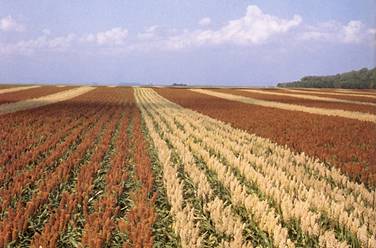

Pioneer Article from the Web.
How Pioneer Looks at Fertility of Milo or Grain Sorghum. Exactrix review for Exactrix owners or potential Exactrix owners..Guy J Swanson, Feb 8, 14.
Your Review is in Purple….Exactrix discussion is in purple colored text. A purple shadow review of the general recommendations from Pioneer.
Exactrix Following the Economic Method of Crop Production For Sorghum.
Introduction
| Starter
Fertilize | Nitrogen
| Phosphorus
and Potassium | Other
Nutrients | Liming

Table 1. Approximate quantity of nutrients in a 100 bushels per acre sorghum crop
|
|
Quantity
in Pounds
|
|
Nutrient
|
GRAIN
|
STOVER
|
|
Nitrogen
(N)
|
84
|
95
|
|
Phosphorus
(P205)
|
42
|
20
|
|
Potassium
(K20)
|
22
|
107
|
|
Sulfur
(S)
|
8
|
13
|
|
Magnesium
(Mg)
|
7
|
10
|
|
Calcium
(Ca)
|
1.4
|
18.9
|
|
Copper
(Cu)
|
.01
|
.02
|
|
Manganese
(Mn)
|
.06
|
.11
|
|
Zinc
(Zn)
|
.07
|
.14
|
Source: Adopted from National Plant Food Institute

Introduction
Planning a soil fertility strategy for grain sorghum has many of the same requirements as corn. Although many producers view grain sorghum as a low maintenance crop, with its deep fibrous root system, sorghum responds well to nutrient applications, especially in lower testing soils. Table 1 shows the typical nutrient removal for a 100-bushel per acre sorghum crop. Of these nutrients, the key elements include nitrogen, phosphorus, potassium, zinc, and sulfur.
Soil testing is the basis for determining which of these nutrients will likely limit production. Soil test results will allow you to develop and fine-tune a sound fertility management plan. Balanced fertility programs improve water use efficiency (drought tolerance) and grain yield, at the lowest possible cost. Fertilizer has a significant influence on water use, as illustrated in Table 2.
Table 2. Optimum Fertility Improves Water Use Efficiency
|
|
Not
Fertilized
|
Fertilized
|
Increase
Due To Fertilizer
|
|
Grain
yield per inch of water
|
2.99
cwt. or 5.3 bushels
|
3.81
cwt. or 6.8 bushels
|
28%
|
|
Grain
yield per acre
|
33.5
cwt or 60 bushels
|
46.0
cwt. or 82 bushels
|
36%
|
Source:
University of Nebraska-Lincoln 27 experiments (Five irrigated) over three
years in Nebraska
Properly fertilized sorghum used an average of one inch more water than unfertilized sorghum but produced 12.5 hundred weight (22 bushels) more grain per acre.
Starter Fertilizer
Row applied starter fertilizer can maximize uptake efficiency for nutrients such as phosphate, zinc and sulfur in low testing soils. The most dramatic visual response to starter fertilizer occurs when soils are cool at planting time. Sorghum planted under cool soil conditions can show a significant early growth response when starter fertilizer is properly applied.
The benefits of rapid early growth include more uniform stand establishment and plant size. Early growth response does not always increase grain yield but may result in earlier maturity of the crop. Earlier flowering can improve yield in years of early frost. The effect of starter fertilizer is most often observed on grain sorghum in areas where nights are cooler. Earlier maturity may also result in slightly drier grain at harvest (one or two percentage points lower grain moisture).
The rate of starter fertilizer depends on the salt content, or index, of the fertilizer, the distance between the fertilizer and the seed, and the soil texture. Use of pop-up fertilizer placed in direct contact with the sorghum seed is more risky, but can be done successfully by precisely metering a lower rate. Do not place urea or ammonium Thio-sulfate in direct contact with the seed. The salt index of a fertilizer can be determined by adding the rate of nitrogen (N), the rate of potassium (K20), and one half the rate of sulfur (S) applied. For example, if nine gallons per acre of 7-21-7 fertilizer, weighing 11.0 pounds per gallon is used, then 99 pounds of material is applied per acre. At 100 pounds per acre, a total of seven pounds of nitrogen (.07 x 100) and seven pounds of potassium (0.7 x 100) would be applied per acre. The estimated salt index would be 14 pounds per acre. The phosphorus content of the fertilizer is not considered when the salt index is calculated. Salt index limits are listed in Table 3. These salt limits are designed to provide safe conditions for all environments, with rare exceptions. In general, the application of excessive amounts of N, K20 and S too close to the seed will delay grain sorghum emergence and reduce stand.
Table 3.
|
|
Sandy
Soils
|
Non-Sandy
Soils
|
|
Placement
|
Salt
Index (lb./acre)
|
|
With
seed (pop-up)
|
5
|
5
|
|
¼
to ½ in. from seed
|
10
|
10
|
|
1
in. from seed
|
20
|
40
|
|
2
in. from seed
|
20+
|
40+
|
Source:
Univ. of Nebraska-Lincoln

GJS……Exactrix does not recommend fertilizer in the row. No seed row fertilizer should be used with Sorghum in Kansas….since seed row fertilizer will reduce yield in many cases… In fact highest yields can be obtained with Mustang Openers banding at 7.5 inch depth.
TAPPKTS and Mustang Openers produce deeper root colonies in more consistent moisture at the 7.5 inch depth…depth of the band can improve yields. Banding deeper with no seed row fertilizer is a western production tradition that has proved many long term benefits in drought stress and Rotational Band Loading.

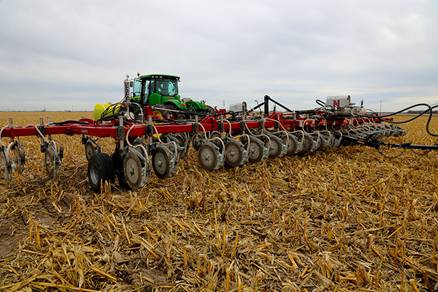
Nitrogen
Nitrogen is the nutrient most often limiting in sorghum production. Under low rainfall conditions with low yield potential, 30 to 60 pounds of nitrogen per acre may be adequate. In productive irrigated situations, up to 200 pounds of nitrogen will be required. In all situations, a nitrogen credit should be given for residual nitrogen in the soil (from soil test), nitrogen content in irrigation water, and nitrogen contribution from a previous legume crop or applied manure. The actual nitrogen rate is based on the expected yield goal for the specific field, multiplied by a factor of 1.2 units per bushel (or 2.1 units per hundred weight or .021 units per pound) minus any nitrogen credits. The yield goal needs to be realistic, taking into account moisture, soil type and cropping sequence.

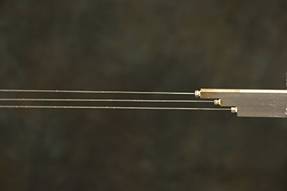
GJS…… No-tillage Deere Exactrix Wing Injection 1990 or Mustang Application….Rain fed crops in western Kansas raising 80 to 100 bushel Milo….Exactrix N as NH3 operates at .66 of the recommendation or 40 pounds N as NH3….or about 45 pounds total N is required including PKS N from liquids. Exactrix recommends the economic method of no more than 12% of the gross income be invested in commercial fertilizer.
Example: Yield goal bushel per acre = 110 bu/acre, carryover nitrogen is 40 lb/acre from soil test. Other credits include 15 lb. nitrogen/acre from previous manure application.
Actual rate = 110 x 1.2 - 40 -15 = 77 pounds actual nitrogen needed.
Example: Yield goal pounds per acre = 6200 lb/ac, carryover nitrogen is 40 lb/ac from soil test. Other credits include 15 lb. nitrogen/acre from previous manure application.
Actual rate = 6200 x .021 - 40 -15 = 75 pounds actual nitrogen needed.
Nitrogen can be applied at varying times with good results. Sorghum utilizes nitrogen rapidly after the plants reach the five-leaf stage. Applications should be timed such that nitrogen is in place and available for this rapid growth phase, as yield potential is being established at this time. Use of starter and sidedress applications should be considered when the potential for nitrate leaching is high. Sidedress nitrogen should be applied by the time sorghum reaches the five-leaf stage. At boot stage, 65 to 70 percent of the total nitrogen has been taken up.
Phosphorus and Potassium
Both phosphorus and potassium are immobile nutrients in the soil and are generally safe from leaching. Application methods include preplant broadcast or banded as a starter at planting time. Low and very low phosphorus levels, as indicated from soil tests, will likely show a response to applied phosphorus (45 to 60 pounds broadcast or 20 to35 pounds in a band) unless yield potential is restricted by insufficient moisture. Yield response to phosphorus application tends to be erratic on medium testing soils and is unlikely on soils testing high and very high for phosphorus.
GJS…….. In Western Kansas on rain fed crops. About 3 gallons of 10-34-0, or 10 pounds P, about 3 gallons of ATS 12-0-0-26S or about 8 pounds S and 1 gallon of KTS or 3 pounds K…. and .4 pounds of Zinc or 1 quart of AZn typically.
All TAPPKTS wing injected with the 1990 or deep banded with the Mustang P-51C or CUE. Spend no more than 12% of the gross including NH3….K can be raised but it does not do any economic good to raise P.
Why does it take a small economical amount of placed P with TAPPS and TAPPKTS?
An Industrial Grade Reaction produces crystals of TAPPS. NH3 is 14 pH and APP is 6 pH in a acid base reaction. This reaction keeps calcium away from the placed P. The triple super ammonization of the polymer 10-34-0 raise the efficiency level of placed P 200% to 300% with Uniformity, Liquid Streaming Flow, Chemical Crop Availability in a powerful chemical reaction crystallizing the nutrients positionally , and Root Pattern Geometry. No-tillage also improves placed P for the growing crop as well as future crops.
Banding deeper also helps drive the P efficiency to the highest levels known by engineers and agronomists.
Exactrix engineers follow the path of great engineers from Shell Chemical Corp, following the timing path with single disc openers.
The longer expensive placed nutrients are stored in the soil the more expensive they become. Placed nutrients become less available over time. Timing into growing roots is very important.
Exactrix discoveries are serendipitous in trials following good engineering.
You can expect 166% more crop available N and 200% more crop available P is constantly delivered. Nominal rates by Exactrix of N, P, K and S will raise a competitive crop.
Soils testing in a medium or higher range for potassium (K) generally do not show a yield response to added potassium fertilizer. The likelihood for deficiency will be greater on sandy soils when compared to fine textured soils. Potassium is sometimes promoted as a stalk strength or stand ability-enhancing nutrient. Adequate potassium levels are necessary for strong stalks, but high potassium rates alone will not provide total protection from stalk lodging. Proper fertilization for adequate levels of all nutrients is the best way to maximize stand ability.
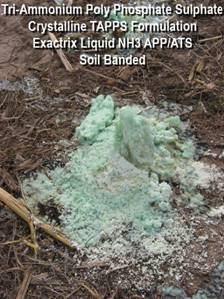
GJS ……
In most conditions 1 gallon to 3 gallons of KTS 0-0-25-17S is all that is needed to produce good profitability from placed K….higher rates will do no economic good on 10 inch or 15 inch band spacing with Mustang or Deere 1990 openers.
Other nutrients
Secondary and micronutrients are required only in certain areas and on certain soils. Rely on experience and local recommendations to determine the need to supplement these nutrients where a grain sorghum crop is planned. Soil tests for some of these nutrients are difficult to interpret. University research on boron, copper and manganese does not show a consistent response for most soils.
Sulfur can be lacking on sandy soils low in organic matter. Under irrigated conditions, irrigation water can supply much of a crop's sulfur needs if irrigation water contains sulfates. A water analysis is helpful to determine sulfur content of the water. For production on sandy soils with low organic matter, it is suggested to try a 10 to 15 pounds per acre sulfur application to ascertain the likelihood of a sulfur response. Sulfur incorporated in a starter mix is a good method of application.
What does Football have to do with a nutrient recommendation?






GJS
Exactrix has a triple threat quarter back with a great coach… Will he run?…Will he pass?….or Will he kick? George Blanda is the last of the great triple threats QB’s, Scoring 2,000 points and retiring when he was 48 years of age.
The great George Blanda of Nutrients, Ammonium Thio-Sulfate by TKI.
ATS is coached by Exactrix like John Madden coached George Blanda.
Positive valence, Nitrogen (NH4) is stable as ATS and is Phyto-toxic to nitro bacteria, reducing the conversion to nitrate, NO3 with negative valence and high nutrient loss potential.
The Exactrix TAPPS formulator process the ATS in such a manner that ATS becomes a Nitrogen Stabilizer of highest quality.
ATS decreases the nitro-ammonias bacteria ‘s ability to bloom and propagate the conversion of non-mobile NH4 to mobile nitrate NO3.
ATS helps NH4 remain in place by delaying conversion to mobile nitrate.
ATS provides two types of S, Sulfate and Elemental Sulfur….and four types of micro- nutrients are freed up in the exclusive pH shift of TAPPS and TAPPKTS…
ATS provides micro-nutrient uptake with the pH shift of TAPPS and TAPPKTS.
Producers do not need to use chelated zinc by keeping Zinc at 1:18 in relationship to P or 10-34-0 at 3.87 pounds P per gallon. For sure 3 gallons of APP allows about 1 to 1.5 quarts of ammoniated zinc at no more than .4 pounds of AZn in the mix.
KTS, 0-0-25-17S in combination with ATS, 12-0-0-26S provides additional punch. [Guy] KTS complements ATS by improving uptake of K in tough drought stress conditions.
Under Drought Conditions of the Great Plains KTS can be up to 50 times more crop effective in a TAPPKTS band as compared to top dressed
KCL.
Zinc is a nutrient that is often overlooked, but is a crucial element for optimum sorghum production. Soil tests are a good tool for predicting zinc need. Zinc is most likely deficient in areas where topsoil has been removed and under high yield conditions. Zinc is usually applied along with phosphorus and potassium. Manure applications, if available, are a good source for many nutrients, including zinc.
The Blender, 2KR in combination with 2KP TAPPS Formulator and 2KC Weigh Master.

Blending in the Ammoniated Zinc. Using Fulvic and Humic Acid more effectively.
If producers need more zinc producers should consider chelated Zinc, but chelated zinc is very expensive . Chelated Zinc up to 10 times more expensive.
Producers can use the third product and pay for it fast. The Exactrix 2KR system can inject Ammoniated Zinc into the flow of the APP/ATS/KTS in Sparging Reflow Blender.
The Exactrix 2KR system solves the economics of Zinc with the VRT, Site Specific application of Ammoniated Zinc. Fulvic acid can be included into the 2KR Blender where CEC is low or the function is related to improved yields.
Liming
A soil pH range of 6.0 to 7.5 is ideal for sorghum production, with pH of 6.5 considered optimum. Nutrient use efficiency deteriorates outside this pH range and liming to raise pH to 6.0 or above is effective. Adjusting high pH downward is usually impractical. Kansas State University research suggests that on acid soils, banding 35 pounds per acre P2O5 at planting can increase yield to the same level as liming at a rate of 5000-10,000 pounds. ECC (effective calcium carbonate) at a significantly lower cost. The concentration of aluminum in the soil increases as soil pH decreases, eventually becoming toxic to crop growth. Phosphate combines with the toxic aluminum, effectively reducing aluminum concentrations in the soil. Kansas State cautions that the use of phosphate for aluminum toxicity reduction is a temporary solution, since it does not change the pH of the soil. The soil will become more acidic each year and liming will eventually be necessary. This method may be applicable on leased land situations or for fields where crop production future may be limited.
Liming costs are also reduced since the application of N is less with Exactrix TAPPS and TAPPKTS. Higher efficiency of nitrogen allows higher yields, better economics in cropping with less liming cost.
Bill McClure holds a Bachelor of Science degree in agronomy from the University of Nebraska.
He currently serves as Field Sales Agronomist and is involved in sorghum production with growers in Nebraska. He has been with Pioneer Hi-Bred since 1990.





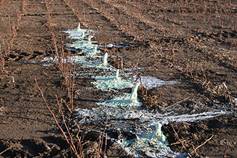


Producers using Exactrix TAPPS and TAPPKTS can qualify for CSP payments and stabilized nitrogen .
Exactrix TAPPS and TAPPKTS is the winner of two national awards.
Producers that need to pay down debt fast can expect 12% more net to the bottom line.
Exactrix economics and the powerful return of investment often paying back the entire investment back the first 1,000 acres.
Article Reviewed by Guy J Swanson, Your Great Plains Reporter.
President, Engineer, Developer and Economist of Exactrix. Exactrix Global Systems, Spokane.
Soybean Production...Solving
Iron Chlorosis on high pH soils. Milo can also be considered.
Iron Chlorosis of Soybean...also
Milo must be considered
Requires top notch management with
improved net margins resulting.
Satellite Images
from Sat
Shot Agri Imagis will help find the critical areas of the field.
https://www.satshot.com/

Veris testing can
also help.
http://www.veristech.com/products/soilph.aspx
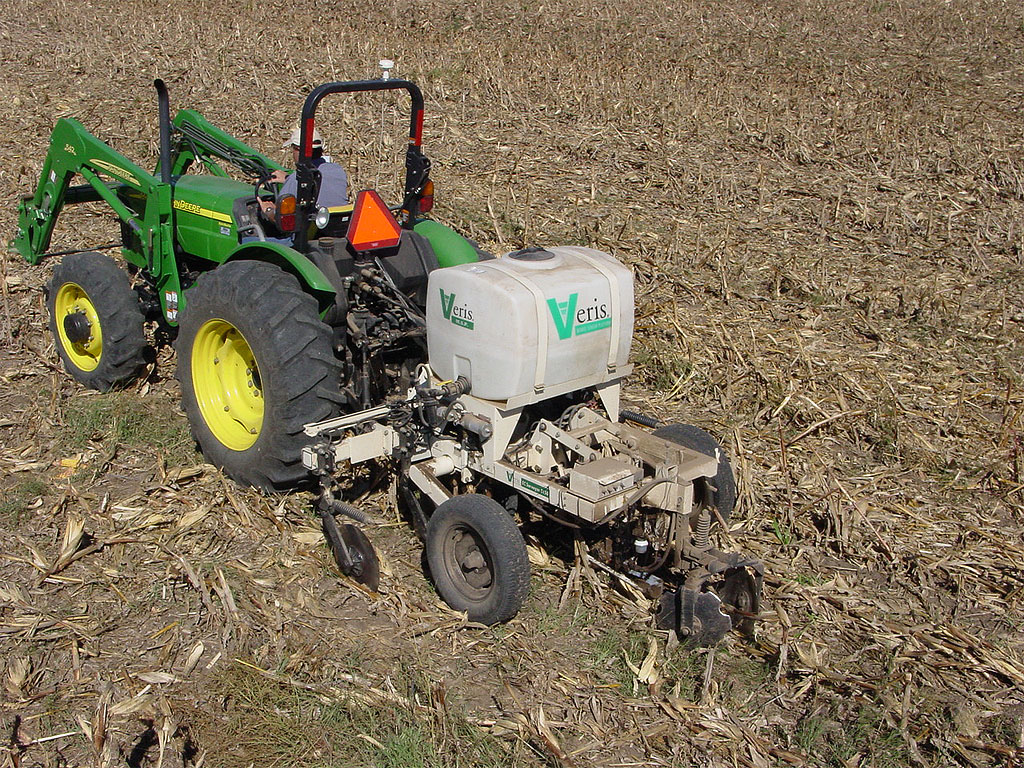
Producers must write their own prescriptions in combination with the crop
consultant.
Exactrix owners can use 2KR Micro nutrient systems to inject Soygreen.
Soygreen application can be amoniated with Exactrix NH3 and APP/ATS.
Other forms of micronutrients are economical in site specific application.
Firstly and most importantly identify the problem area.



Using VRT Site Specific Application and
Exactrix 2KR Micro –Nutrient systems. Fertilizer Sources of Iron
•Deficiencies of iron occur more
frequently than most other micronutrients in Kansas. The problem is also
prevalent in Western Nebraska, Colorado, South Dakota, North Dakota and
Minnesota.
•Iron Chlorosis has a patchy or irregular appearance in the field.
•Success with iron fertilization is difficult –Difficulty in correcting Fe
deficiency with soil-applied fertilizer is well known.
•Iron is quickly converted to unavailable form. Super Ammonization can be
considered. Combining with APP in a 3rd product injection has been studied
on small acreages.
•Certain Fe Chelated carriers (EDDHA) have been effective but have not
been economical and may require multiple applications. Soygreen can be
site specific applied. Soygreen becomes economical in site-specific
technology.
•Foliar Application most promising, but new techniques are being developed
to make economical iron applications into the soil.
There is also a consideration for ferrous chloride, ferric chloride,
ferrous sulfate, Super Ammoniated with NH3...
To date NH3 with APP/ATS in double crop soybeans has helped in early
starts and good yields.
Soygreen is a good choice in VRT site specific…the material is
highly Chelated…and expensive and therefore ideal for site specific
application.
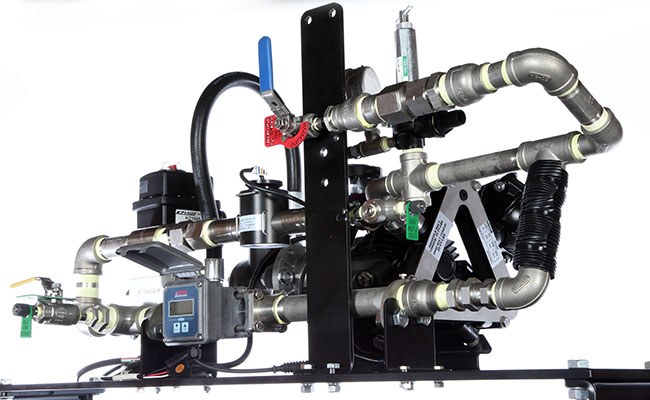
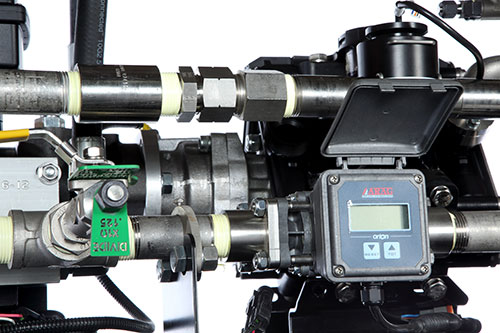
The 2KR system is specifically
designed work such products as Soygreen, Ferrous Chloride and Ferrous
Sulfate.
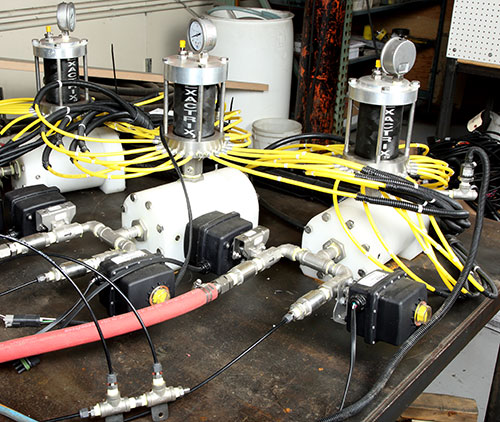

Triple Super-ammonization provides an
Acid Base Reaction.
About 30 to 50 pounds of N as NH3 is reacted with 5 to 10 gallons of
acidic iron materials.\

NH3 at pH 14 can be reacted with pH 1
iron chloride, iron sulfate or Soygreen in an Acid base reaction creating
Tri-Ammonium Iron Chloride or Sulfate in site specific application.
The technique is especially effective in double crop soybeans of the
western Great Plains.
Genetics and Selection of Correct Variety, Pioneer:
https://www.pioneer.com/home/site/ca/template.CONTENT/guid.753663E1-88E5-4766-8F9F-5DDB4E3A13AC/
Soygreen, West Central
http://www.westcentralinc.com/Product/Soygreen.aspx
Ferric Chloride http://en.wikipedia.org/wiki/Iron(III)_chloride
|
